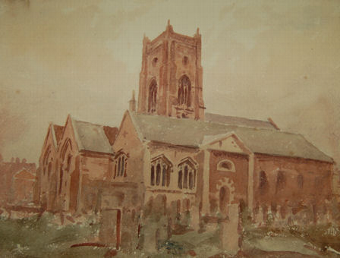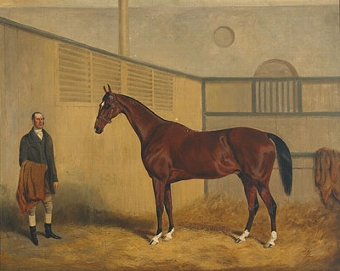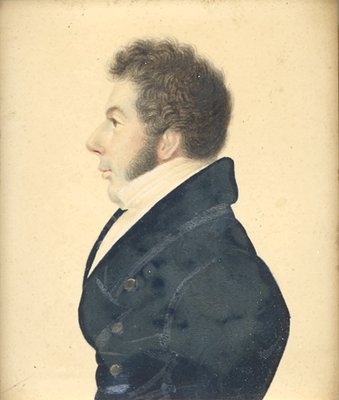The Prince of Wales''s title, though ancient, carries no established or formal role. The Prince, by active involvement in his organisations, has created a new role through which to serve the nation.
The Prince of Wales is the 21st holder of the title in 700 years - but the role of The Prince has not been defined over the centuries. It has always been for each Prince of Wales to interpret his position as he wishes.
On leaving the Armed Forces at the end of 1976, The Prince had no set framework in place for his working life during the years until he would take up his responsibilities as King.
In 1975, at the age of 26, responding to a question from students in Ottawa, Canada, on how he saw his role as Monarch, The Prince said it could be 40 years before he became King. His Royal Highness said it would be difficult to predict so far ahead. The most important thing will be to have concern for people and give some form of leadership. It''s a fascinating job and I''m looking forward to the future.
The Prince''s life - as the first heir to the throne to go to school, as the first to study for a university degree, and after an active career in the Armed Services - has left him with a strong social awareness. By the early 1980s, The Prince of Wales was developing his role by finding out more about the problems of industry, agriculture and society generally. He saw a need to tackle the growing problem of the disadvantaged and of social exclusion, particularly among the young, which he felt he could help to meet by using the influence of his unique position.
Each year The Prince undertakes around 500 public engagements in Britain and overseas.
As heir to the throne, The Prince has access to people at all levels in all walks of life. Over the years, The Prince of Wales has been able to develop this role as a catalyst, with often unseen successes produced in unpublicised meetings, seminars and events at St James''s Palace or his Gloucestershire home, Highgrove.
The Prince''s concerns were reflected from early on in the speeches and the comments he made during visits to the inner cities, industry, farms and deprived housing areas. This work led in 1976 to the founding of The Prince''s Trust out of a conviction that a way should be found to tackle the alienation of many young people in society, by encouraging challenge, adventure and self-help.
A decade later fund-raising rock concerts and royal film premieres helped the Trust to hand out more than ?300,000 a year in grants to disadvantaged young people between the ages of 14 and 25.
This work has continued to expand, and in 1997 The Prince''s Trust raised ?25 million.
Altogether, The Prince''s Trust and its related organisations have helped over 200,000 disadvantaged young people fulfil ambitions for themselves or their communities, with more than 33,000 given small grants or loans to set up in business, and nearly 15,000 completing the Prince''s Trust Volunteers personal development programme.
Even older is the Welsh organisation set up by The Prince in 1971, two years after his Investiture, and now known as The Prince''s Trust ''Bro'' - from the Welsh for community. It has supported more than 4,000 projects, helping Welsh communities cope with the effects of change, backed by nearly ?4 million in grants.
The Prince is also permanent patron or president of more than 270 organisations, and is temporary patron or president of more than another hundred. He is an honorary life member of nearly 200 organisations. The Prince has always insisted that he will not be a figurehead, and accepts no position unless he has the time to be of active use to the organisation.
In 1993, The Prince of Wales wrote in a letter to director of The Prince''s Trust Tom Shebbeare: For the past 15 years I have been entirely motivated by a desperate desire to put the ''Great'' back in Great Britain. Everything I have tried to do - all the projects, speeches, schemes etc. - have been with this end in mind. In this rare statement of his vision and aims, the Prince of Wales makes it clear he has no ''political'' agenda. His aim is a long-term one, drawing on the nation''s talents and traditions to help people achieve their potential in all aspects of their lives.
The artist Bernard Hailstone (1910-1987) was known for his portraits of royalty,members of the Armed Services, musicians and personalities of stage and screen. Among the most memorable are his portraits of Sir Winston Churchill, Peter Ustinov and Sir John Barbirolli. His portrait of Lord Olivier now hangs in the bar of the Garrick Club. Less known, but among his best work, are his paintings of the Blitz. During the war he joined up as a fireman in the Auxiliary Fire Service, along with such artists as Norman Hepple and Leonard Rosoman, and would set up his easel among the bombed London churches and smouldering buildings when there was a lull in the raids.The experiences of these firemen artists were not without their humorous side, for example, when Hailstone helped to extinguish a fire in a warehouse containing barrels of rum near the docks, or when he was disciplined for using His Majesty'';s gas to give himself enough light to complete a picture after dark.
His work came to the notice of Kenneth Clark, who in 1941 asked him to become an official war artist to the Ministry of Transport. During this period he recorded the life of the Atlantic and Mediterranean Convoys. In 1944 he was sent to South East Asia Command (SEAC) to paint Lord Mountbatten and members of his staff. Much of his work is in the Imperial War Museum.
This was the beginning of Hailstone''s career as a portrait painter, which he pursued for the rest of his life - perhaps, some felt, at the expense of his sensitive landscape painting.
Bernard Hailstone came from a large family, in Hadlow,Kent, and he remained in Hadlow for the rest of his life. His elder brother,Harold,was a well-known Punch artist and illustrator. Bernard himself was the seventh child of a seventh son, a fact to which he attributed the good fortune and luck which he enjoyed during his adventurous life.
A generous and warmhearted man, he was very good company,and must have been one of the very few painters who could work with others around him. He was never so happy as when dining in the convivial atmosphere of the Chelsea Arts Club or teaching his pupils during the weekly painting classes he held at this studio.
Teaching for him was perhaps rather more an occasion for getting intouch with others than a strict economic necessity,for he had a cavalier attitude to money and an endearing absent-minded and disorganised way of life which kept his many friends amused.
In spite of this, Bernard Hailstone was much in demand and travelled the globe making new friends through his commissions. He often travelled to New York on the QE2, and would entertain passengers with after-dinner talks on his long and varied career and eminent people he had painted.
Antiques.co.uk Ref: E2WDH68D
- Materials:
- Pastel on Paper














